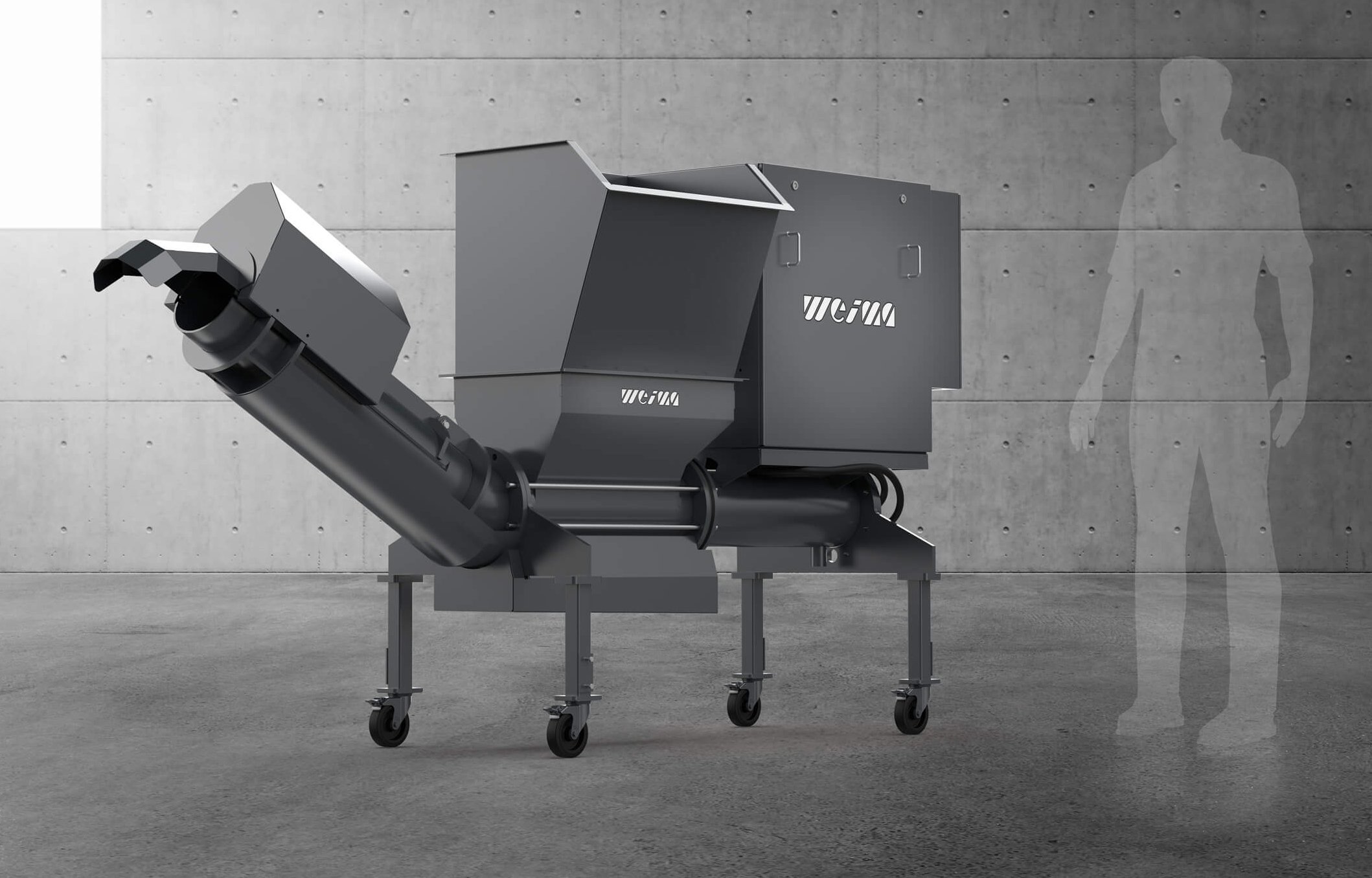
Presses for drainage and compression of grinding sludge
Presses for drainage and compression of grinding sludge Presses for drainage and compression of grinding sludge Presses for drainage and compression of grinding sludge

These drainage presses are currently particularly popular.
Dewatering presses for grinding mud | sludge | swarf
From metalworking
With the hydraulically operated WEIMA C.200 press, you dewater and compact wet grinding and drilling sludge to recover expensive cooling lubricants, oil and emulsion. The almost dry sludge can then be disposed of professionally without having to pay additionally for the weight of the liquid.
Separation of grinding sludge and coolant using a WEIMA C.200 dewatering press
WEIMA presses are characterized by their simple and robust design. The main components are thus exposed to comparatively low wear. A hydraulically operated cylinder with a press ram moves horizontally and presses the grinding sludge, fed via the hopper, into almost dry, manageable compacts with a diameter of 200 mm. These are ejected via a discharge pipe. The pressed-out liquid can be pumped off from the collecting pan below the machine.
De Rooy relies on WEIMA solutions for dewatering
The collaboration between De Rooy, Nuenen in the Netherlands, and the WEIMA Maschinenbau GmbH demonstrates how a circular economy can be implemented in metal processing. Together, they worked on a solution to not only transport and dispose of metal waste such as grinding sludge and aluminum chips in a space-saving and cost-effective manner, but also to convert them into valuable, reusable materials. The two WEIMA presses, C.200 and TH 1500, play a central role in De Rooy's recycling process.
Risks and disadvantages of grinding slurry
Leaking tipping containers. Sticky coolant on the production floor. Among the biggest challenges are certainly the proper storage, handling and disposal of toxic grinding and drilling muds of all kinds. They can also ignite themselves under certain circumstances and also pose a health risk for employees due to strong odors and the formation of bacteria. With WEIMA presses you separate liquid from grinding dust cleanly in only one work step.
Advantages compared to grinding sludge recycling by briquetting for disposal
Both technologies pursue the same goal: to dewater sludges as dry as possible and to separate the liquid cleanly.
However, if you compare the design of WEIMA dewatering presses with classic briquetting presses, it quickly becomes visually apparent: machines and plants for briquetting are designed to be significantly more complex. It is true that higher press pressures can be achieved with them. However, practice and experience have shown that for an optimal dewatering the pressing pressure of WEIMA presses is ideal – and does not have to shy away from the comparison with a briquette.
As a consequence, WEIMA presses are significantly less expensive to purchase and, due to the simple design, more wear resistant.
In addition, a pellet with a diameter of 200 mm is significantly larger than a briquette with 60, 80, or even 120 mm. This results in decisive advantages in terms of throughput.
Optionally as stainless steel version against rust and corrosion
For a long service life, we recommend the particularly high-quality machine variant made of stainless steel. The machine body is thus protected against heavy wear and corrosion such as rust. For less abrasive applications, we offer standard machine variants made of galvanized or painted steel.

Did you know?
Up to 90 percent of the cooling lubricants can be recovered through compression.
Save costs by grinding sludge recycling with WEIMA presses
Sludges are underestimated by many as a valuable material. Now cleverly save disposal costs – or change from briquetting to dewatering and compaction with hydraulic WEIMA presses.
Request sludge press now
Request quote
Outlook for recycling grinding sludge and dusts
Due to the high degree of contamination, grinding sludge usually has to be disposed of or landfilled at high cost. Large quantities of raw materials are thus lost and pollute our environment. For this reason, there are now a number of innovative approaches to making the waste product grinding sludge metallurgically usable again. These include the idea of using dry grinding particles in additive manufacturing (3D printing), for example. Depending on how de-oiling processes develop, the classification of grinding sludge as hazardous waste could also soon be eliminated.









